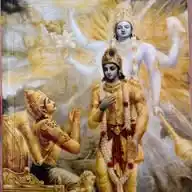
Bhagavadgita
June 11, 2025 at 02:22 AM
11 June 2025
Gist of Bhagavad Gītā 13.25–26:
These verses describe various ways in which seekers come to realize the Self. Some do so through meditation (dhyāna), others through intellectual inquiry (sāṅkhya yoga), others through selfless action (karma yoga), and still others by dedicated listening to scriptures from a teacher (śravaṇam). All sincere seekers, regardless of method, ultimately cross over mṛtyu (mortality), attaining Self-knowledge.
Swami Paramarthananda clarifies that these are not four separate paths but stages within the single sadhana of jñāna yoga. He points out that confusion arises when these methods are seen as mutually exclusive alternatives. Instead, he aligns them with the structured Vedāntic progression:
1. Karma yoga – to purify the mind.
2. Upāsanā yoga – to prepare the mind for subtle knowledge.
3. Śravaṇam – systematic listening to the teachings from a guru.
4. Mananam – removing doubts through reflection.
5. Nididhyāsanam – assimilating and internalizing the knowledge.
He draws particular attention to the verse’s closing statement—“śrutvānyebhya upāsate, te’pi chātitarantyeva mṛtyuṁ śrutiparāyaṇāḥ”—affirming that those who faithfully listen to the teaching cross over mortality. This, Swamiji explains, underscores the centrality of śravaṇam in Vedānta.